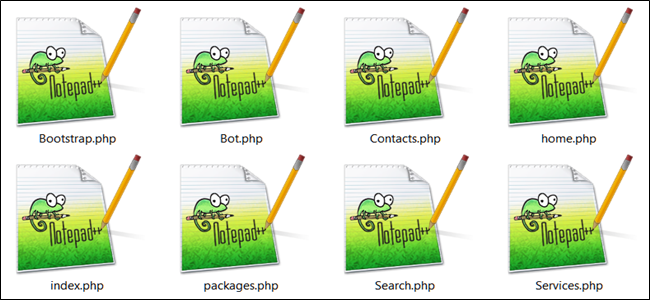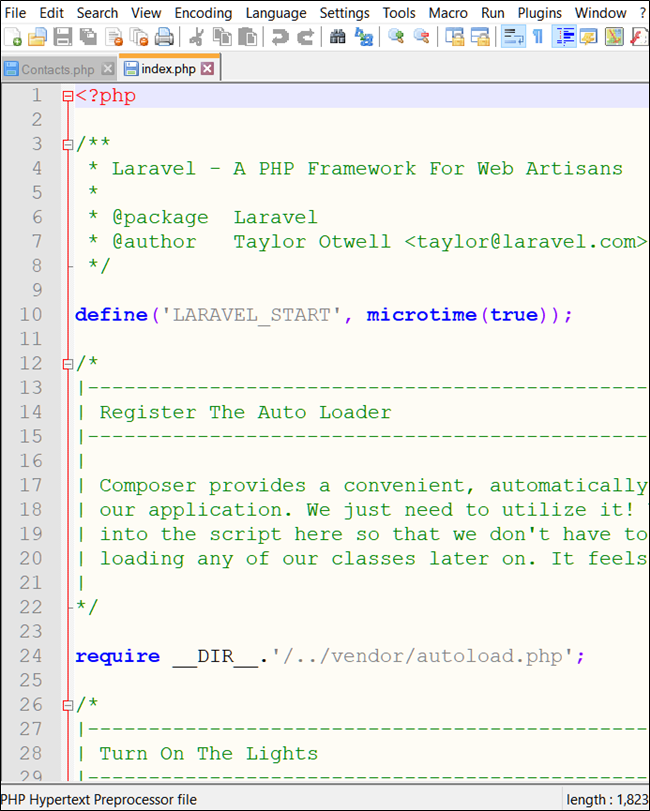A file with the .php file extension is a plain-text file that contains the source code written in the PHP (it's a recursive acronym meaning PHP: Hypertext Preprocessor) programming language. PHP is often used to develop web applications that are processed by a PHP engine on the web server.
What Is a PHP File?
PHP was created in 1994 by Rasmus Lerdorf as a simple set of scripts written in the C programming language. Its primary purpose was to track visitors who viewed his online resume. He initially called these scripts "Personal Home Page Tools" (PHP Tools) and would later rename them to FI (Forms interpreter), and then PHP/FI, before finally deciding on its current recursive name. PHP is used by 78.9% of all websites whose server-side programming language is known.
PHP files are processed by web servers using an interpreter, which executes the code and then combines the results (which can be any kind of data, like queries from a database or images) with dynamically generated HTML to form the webpage you see. This prevents any of the PHP code from actually being viewed by the user, even when looking at a page's source code.
Often when you fill out a form online or submit contact details to a website the backend code will send that information to a server using a script inside the PHP file. WordPress is heavily based using PHP files.
How Do I Open One?
Since PHP files are plain-text files that are human-readable, all you need to view one is a simple text editor like Notepad, Notepad++, Sublime Text, Vi, and so on.
If you only need to take a quick look inside a file, you can use Notepad and not have to download any other software. If you plan on editing the code, we recommend using an editor that correctly formats PHP code. I'll be using Notepad++ on Windows in my example.
By default, when you install a text editor like Notepad++ it will associate most text/programming file extensions automatically, so double-clicking the file should open it up inside the program.
If that doesn't work, then you can right-click the file and choose your favorite text editor from the "Open With" list provided.
The same holds true on other platforms like macOS and Linux.
If you're trying to run or execute PHP files, you will need to download and install PHP on your computer to compile the code. For this, you can use a local server such as Varying Vagrant Vagrants, WampServer, or XAMPP.



